We used Cinebench 11.5. All of our tests
ran 5 times and the average result was put into the performance chart.

Cinebench
11.5
We used Fritz Chess Benchmark during a long
period of time and it proved to be very visual. It created repetitive results;
the performance in it is scaled perfectly depending on the number of involved
computational threads.

Fritz
Chess Benchmark
A small video in x264 HD Benchmark 4.0 was
encrypted in two tests then the whole process was repeated 4 times. The average
of the second passage was showed in the following diagram:

X264
HD Benchmark
We measured Adobe Photoshop’s performance,
using our own standards created from Retouch Artists Photoshop Speed Test which
had been creatively adjusted. It included typical corrections of four 10MP
pictures from a digital camera.
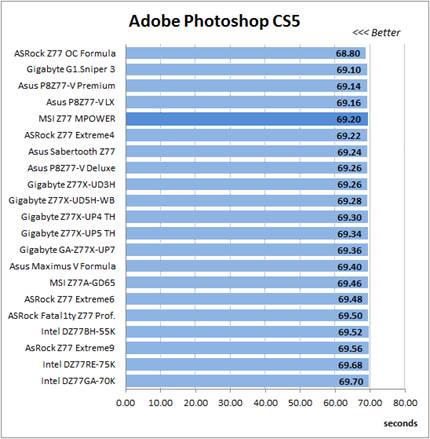
Adobe
Photoshop CS5
In test of storing a 1GB data compressed by
using LZMA2 computation, while other compressing settings were kept at default

7-zip
9.20
Like in compressing data test, 16 million
of Pi numbers were calculated, the better. This is the only standard where the
number of processing cores doesn’t matter, as it creates a single-thread load.

SuperPi
16M
Because we didn’t overclock graphics in our
mainboard review, the next diagram only showed CPU experiment from 3DMark 11 –
Physics Score. This result was witnessed in a special physical test emulating a
complicated gaming system that works with a lot of projects.

CPU
experiment from 3DMark 11 – Physics Score
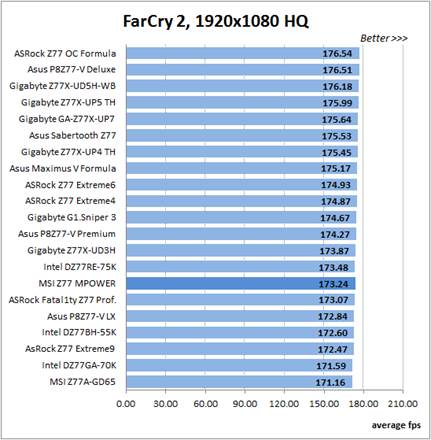
FarCry
2
Resident Evil 5 is also an internal
performance test. Its peculiarity may have advantage of the multi-core
processing system. The test was run in DirectX 10 at 1920x1080pixel resolution
and high graphics. The average after 5 times was done for further research.

Resident
Evil 5
Batman: Arkham City also reacted forcefully
to any change in CPU clock frequency, but it used DirectX 11. We ran the game’s
built-in standard 5 times with high graphic setting then took the average of 5
runs for the diagram.
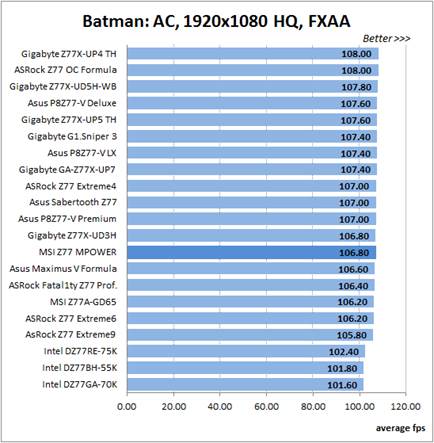
Batman
We saw a good illustration for a fact that
has been known, is related mainboards working in similar test condition
delivered the same performance. Thus, there’s no wonder that MSI Z77 MPOWER in
nominal was quite similar to performance of participating components.
Overclocking mode
During the processing and overclocking
memory, different mainboards got different results, we wrapped them up in this
table for your convenience.
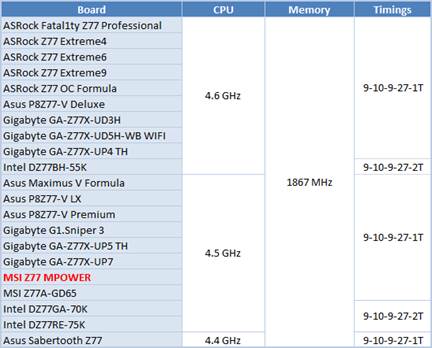
Processing
and overclocking memory
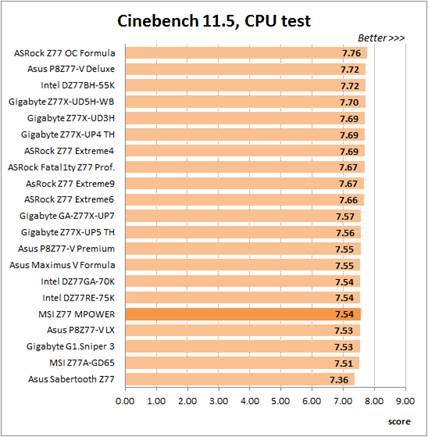
Cinebench
11.5

Fritz
Chess Benchmark
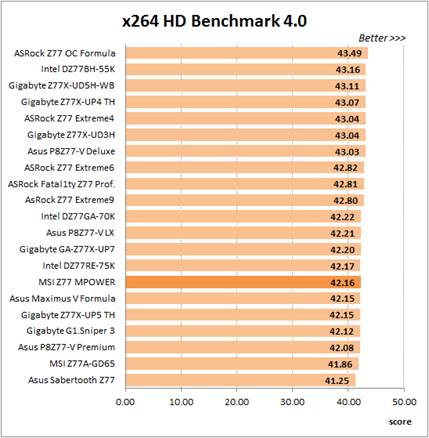
x264
HD Benchmark 4.0

Adobe
Photoshop CS5
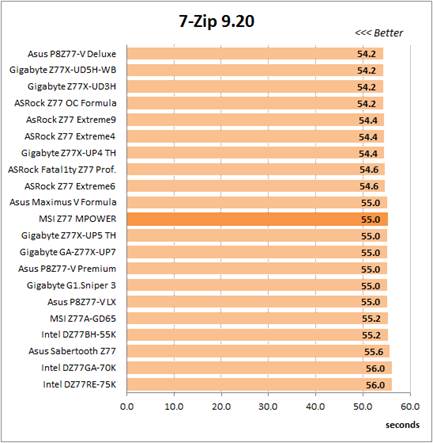
7-zip
9.20

SuperPi
16M
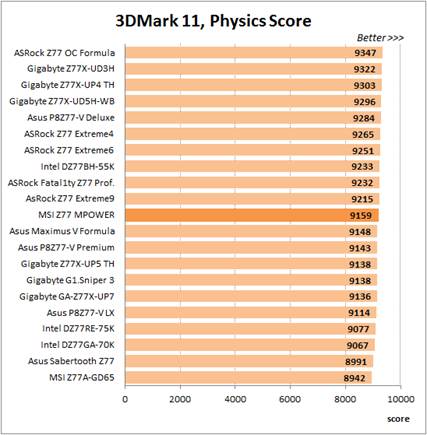
3DMark
11

FarCry
2
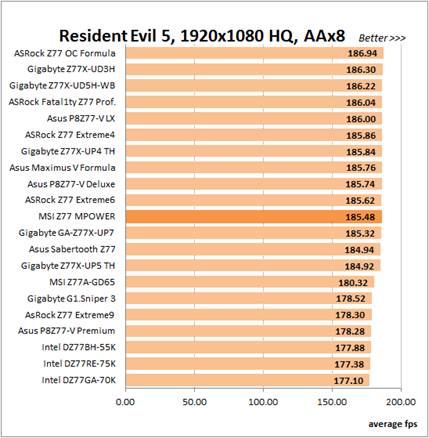
Resident
Evil 5

Batman
Because MSI Z77 MPOWER didn’t allow us to
overclock the test CPU to its maximum frequency, it appears in the lower part
of the diagram. However, I want to focus on that in some cases it performed
best among all other mainboards having the similar overclocking interval, for instance,
in tests from Adobe Photoshop CS5 and SuperPi. Additionally, it worked better
than we had expected in gaming tests. Of course, the difference between MSI Z77
MPOWER and other mainboard models is very small ye, at least, giving us the right
to state surely that MSI Z77 MPOWER has no performance issues, if you are using
an appropriate BIOS version, well.
Power consumption
We measured power consumption by using
Extech Power Analyzer 380803. This device was connected before the PSU and
measures the power consumption of the entire system (without the monitor),
including the power loss which took place in the PSU itself. In the idle mode
we booted the system and waited until it stopped logging into the hard disk. After
that, we used LinX to load the CPU. For a more illustrative picture there are
graphs that showed the increase in power consumption relying on the number of
execution threads running in LinX (at both the default and overclocked system
settings). The results of MSI Z77 MPOWER were marked with a darker color for
your convenience.
Because our compatibility issue we found
between Gigabyte GA-Z77X-UP4 TH and Gigabyte GA-Z77X-UP5 TH mainboards is our original
Cooler Master Real Power M850 supply. We had to replace it with Enermax NAXN
ENM850EW. All PSU share the same specifications, but Enermax NAXN ENM850EWTis 1-3W
more energy-efficient than Cooler Master Unit. So as to be able to use the
previous results received, we decided to make up for this difference in
efficiency by adding 2 W to all new power readings, hence we could still
compare their results against the power consumption of all early tested
products.
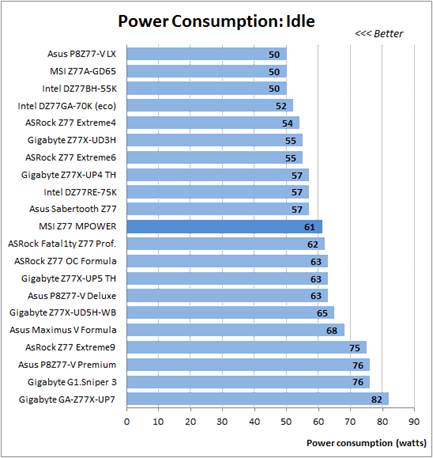
Idle
mode
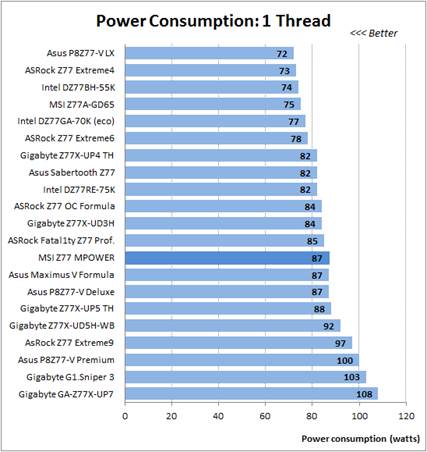
1
Thread

100%
Load
The diagram shows that MSI Z77 MPOWER
mainboard proved fairly average power consumption in nominal mode. However, this
is not actually true, and the board is not high-efficient. Unluckily, you
couldn’t see this advantage with default setting, because in this case the
power-saving mode only is only partly operational and “Intel Turbo Boost”
didn’t work accurately. Though, even when you manually activate all of
power-saving modes and switch the CPU to its originally nominal setting, the
mainboard changes. At 48W, MSI Z77 MPOWER can easily become the most
power-saving mainboard in idle mode. Under heavy load, some rival consume less
power, yet it is still among the leaders.
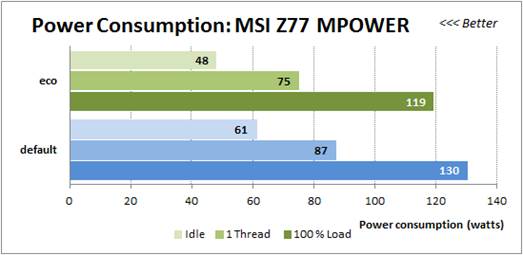
Power
consumption
In overclocked mode, the board seemed good,
showing off lower power consumption than most of the rivals as all power-saving
technologies were kept intact. However, the positive result of this triumph was
shadowed by the fact that we couldn’t overclock our processor to the maximum,
because the board didn’t allow increasing Vcore CPU in Offset mode and thus we had
to overclock without adjusting CPU voltage.
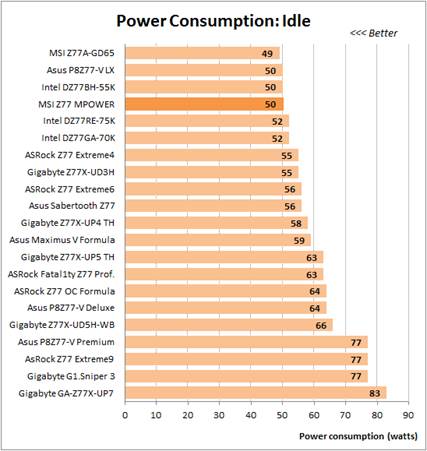
Idle

1
Thread
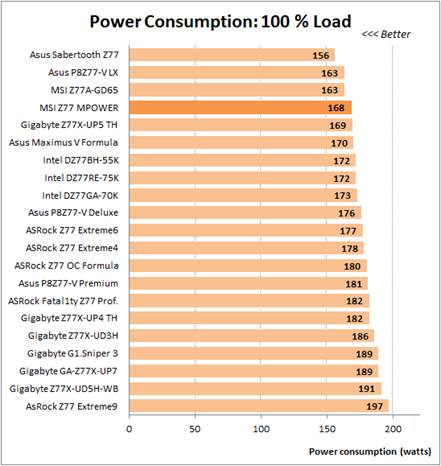
100%
Load